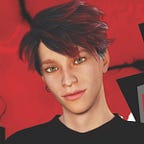Using a Developed Dance Choreography Planner for Writing Action Scenes
Are you a writer who tends to listen to music when drafting a story? I do at times. Sometimes I take that song-listening moment to another level.
I don’t often use my Song Action Sequencer much, but when I do, it’s usually for complex and multifaceted action scenes. The song being a drafting aid. What is this tool, pray tell? This article is a quick walkthrough of what it is and how I use it.
When the Action Is a Bit Too Much To Draft
At the moment, my story Black Star Heart is at the heart of a battle with AI, android and weapon technologies during a factory shut down. As such, there are a lot of action scenes to map and many characters to map to these scenes. It can be challenging to keep the pace, moods and physicals together.
So, my attempts to manage and navigate these scenes is via use of my own version of a choreography planner; mapping out the sequence and flow of the moments.
Dancers will be more than familiar with these planning tools.
I grabbed one of these types of planners to be as a reference and developed my own version to be suitable for writing.
Voilà! The Song Action Sequencer was created.
How I use a Song Action Sequencer to Get the Action Sorted
I would decide the moods that I want to draw out within a scene first.
I tend to pick three types, which convey the transitions I want to play out. For example, the action scene might start off as oppressive. However, the hero team is able to come together as a community that ends the scene on a heroic mood. I would highlight the cells with colors to match the moods for visual quick referencing.
Once I have decided the mood and pace of the scene, I’ll then pick a song to match.
With the song picked, it’s now time to listen to the tune and add the battle moments.
How to Map
I tend to listen through the picked song a few times to get a feel for it and envision the action scene played throughout. Once I’ve mentally noted where I want it to add the actions, I’ll start to map.
The action scene is broken down into “moments” and these are tracked on the song’s timeline.
Transitions are the time value in the song’s timeline. So the ‘1’ value in the Transitions column indicates the song having been played for 1 second before it transitions to the next. The starting value can be changed accordingly.
1 Transition 0.X indicts the time from one second, where a moment transitions to the next in sequence.
Cast is the person driving or the focus of the action. Action Made is what is happening in that second moment, leading to what is the Cause and Effect that then produces the result, which is the Transition Action.
Anything else to note for the moment is captured in Additonal Notes. This could be more details of the transition action, if it’s a key moment for a critical story goal, and so forth.
I’ll listen through the song, pause to note the “paused time” and capture that in the transition column.
With the exampled moment, the song had played for one second. During that one second song-play, the character named Matt was making laser gun attacks on cyborg cells/chambers, which added to the battle pressures he was facing, and had freed cyborgs retaliating with Terra sword (magic output) attacks.
The moment transitioned after 1:06 seconds of the song’s play, where the moment now focused on a character named Chad, who used his Terra magic to block the cyborg’s retaliation on Matt with a Terra Shield. Saving Matt’s life, but he was soon facing his own retaliation from the enemy cyborgs with firebolt attacks.
I’ll continue to map the moments until the song has ended.
Noting the Mood
As mentioned above, the moods are color coded. Where they apply, I’ll color block the transition cells, then note according to the mood.
If the transition cell isn’t colored; it means the mood is as per the pace and neutral.
Write to the Sequence
Once the sheet is filled up with all moments mapped to the song. I’ll then write the chapter(s) according to the Song Action Sequencer.
Typically, a moment is captured in one or a few paragraphs, flowing down to make the chapter(s).
As mentioned at the start of this article, it’s most suitable for complex action scenes where there are a lot of players involved. Having this tool helps ensure the flow and consistency of the moments.
